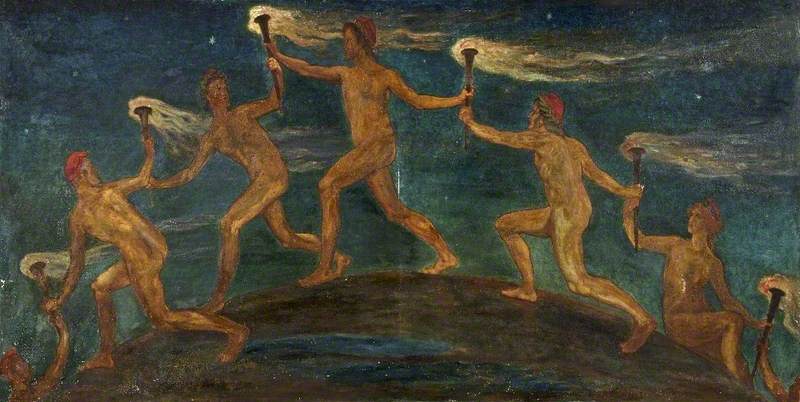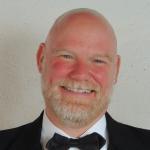Two events in which I was invited to take part in November and December of last year prompted me to look at where OKOM is headed (the internet acronym—Our Kind of Music—is as good a way as any to lump together the myriad styles toward which we TST family members gravitate).
As we roll over into a new year, we simultaneously squint at the past even as we gaze toward the future. Anyone involved with American pop music of the first half of the 20th century on any level, whether performing it, listening or dancing to it, even writing about it, is constantly faced with this juxtaposition. The originators of this music were kids: teenagers or 20-somethings on the cutting edge of the new, the avant-garde, the sui generis. Contrast these innovators with the audiences listening to their creations, as performed live by contemporary musicians, and you have a doozy of a generation(s) gap.
Excepting classical music (not so named, of course, when it made up the hits of the day) you’d be hard-pressed to identify styles of music with such a long shelf life as our ragtime, blues and jazz, in all their multifarious forms and styles. Yet, while an occasional youngster (by that I mean anyone not alive when Ronald Reagan began his second term as President) or group of youngish dancers might be seen in attendance at an event presenting OKOM, they are not in abundance in most parts of the US. Events featuring OKOM in many European countries draw audiences of a wider age-spectrum. To be sure, New Orleans, New York, Chicago, and certain parts of California are seeing a continuation—or even upsurge—of younger people trying the sounds out for size, both as players and partakers. The hope is that the music in those areas, as it did over 100 years ago, will again spread across the country in an irresistible infection of rhythm and joy.
Ensuring the future of OKOM
There are powerful ways to encourage this desired spread. For me, the first is ironic, especially considering I devoted my previous two columns to decrying its existence. I refer to technology. There is more opportunity to stumble across examples of the recorded pioneers and/or current soloists or ensembles playing hot music—on YouTube as well as the proliferation of streamed weekly radio shows (see ads for these on page 29 of this issue of TST!)—than at any time in the past in the comfort of your own home, or in the bustle of public transport or on a crowded street. Millions of videos and sound bites are now available on demand. If you, dear reader, are as passionate about OKOM as am I (and if you’re not, you wouldn’t have gotten this far in my ramblings nor would you likely have a subscription to this publication) then you’re as optimistic as am I that once someone is exposed to this music played well, they can only want more of it.
Additionally, jazz camps and workshops promoting the preservation of OKOM go a long way to help keep the music alive. There are terrific camps for adults (kind of like a musical fantasy football event where players ranging from amateur to semi-pro convene to play better together as well as learn more about the history of the music they love to play) including, but not limited to, the San Diego Adult Traditional Jazz Camp in January (sdjazzfest.org), the New York Hot Jazz Camp co-led by Bria Skonberg and Molly Ryan in April (www.nyhotjazzcamp.com), Banu Gibson’s New Orleans Traditional Jazz Camp in June (www.tradjazzcamp.com) and any of Allan Vaché’s Jazz Fest at Sea cruises; each cruise features a Jazz Jammers element run by John Skillman and Mike Evans(www.jazzfestatsea.com). Anne and I have even incorporated a jam session into the Road Scholar program we teach several times a year.
The programs and camps developed for young people range from multi-day camps for students (there are several) to festivals providing a platform for youth ensembles or individuals to play a set or two—such as San Diego, Pismo, Monterey and Davenport (Bix Fest) to name a few—to, in a unique case, February’s two-day Teagarden Jazz Festival sponsored by the Sacramento Jazz Education Foundation, an entire festival exclusively featuring youth bands and performers playing traditional jazz with some professional “sit-ins” along with an annual guest artist (this upcoming year’s guest is Dan Barrett).
On the youth ragtime side of things, The West Coast Ragtime Festival has produced two Youth Showcases, Spotlighting Ragtime Youth, that were streamed live in 2021/22 and can still be found on YouTube. Talented pianists from the ages of 8-21 show off their skill and passion. Another of these streamed events is planned for 2023 and soon there will be information at westcoastragtime.com about how to be a part of this. The festival youth performers now generally come from the streamed virtual concerts. During the festival itself in November, young pianists are afforded short sets to strut their stuff, and there is a Youth Concert featuring the most accomplished of the young musicians. For the last several years, I have had the honor of conducting the annual master class at the festival, as well as emceeing the Sunday Youth Concert. Taking part in this capacity never fails to inspire me!
Last year, after the West Coast Ragtime Festival wrapped up five days before Thanksgiving, Anne and I returned home to CT only to hop a plane back to Sacramento two weeks later. It’s not that we enjoy flying coast-to-coast, especially these days. Only something special would entice us to retread the miles we’d flown a fortnight prior, and this was a wonderful event for a great cause! I was invited to headline the Sacramento Jazz Education Foundation’s annual “Up Close and Personal” event to benefit the aforementioned Teagarden Festival. The proceedings included a pre-concert nosh-and-slosh (those, by the way, are the BEST; both musician and audience get relaxed and settle in for a good time) during which I got to pretend I was a rock star (photos with Jeff Barnhart?? Huh??).
As part of the December event, the trio I was leading welcomed a youth performer to the stage to join in the fun. In my teens, I treasured the opportunity to play with the professionals and have always considered it of paramount importance to afford young musicians that same chance whenever possible. What I’ve found is that it’s unusual for a young musician to spring forth fully formed. The most excited and proficient of them come from a background where their involvement was encouraged and their development nurtured.

Sometimes, as in the case of Shaye Cohn, there is a formidable family background in jazz—Shaye’s grandfather was tenor saxophonist Al Cohn and her father is guitarist Joe Cohn. In most cases, young musicians can combine nature with nurture in the form of local bands, clubs or camps. As teens, now world-renowned musicians such as Bria Skonberg, Evan Arnzten, Chloe Feoranzo, Dave Bennett, Molly Reeves, and all three Au brothers joined whatever band I was in or leading at some festival, played a few numbers, and WOWED everyone.
Keep an eye out for a young man in California who in a way DID spring forth fully formed; he is the only musician in his family but did get some coaching from Clint Baker. He’s a gifted reed player named Nathan Tokunaga and he’ll be performing at 2023’s Monterey Jazz Bash by the Bay. At the age of 15, he is running his own trad band and playing weekly gigs in the Bay Area of CA.
What YOU can do
Education and involvement are the two key elements towards ensuring OKOM’s survival. Sure, students are in Youth Bands for different reasons—for some it’s just a safer hobby than a contact sport or a noisier one than chess—and only one in ten thousand will become a Shaye, Bria, Evan, or Chloe, but perhaps some of the thousands of young musicians who have played tunes from the 1900s-1950s in the school bands willing (or brave enough) to include early jazz will have an affinity for those sounds and, as they journey down their individual paths, check those sounds out when they come across them. As well, the greater number of young players we can encourage to perform ragtime, blues and jazz, the more their contemporaries will come search it out. This is the only way the music will stay relevant and not be relegated to the concert hall as some fossilized sound bite of history experienced by only the most effete of the elite.
When you’re next attending a musical event that has a youth element, no matter what the style, please take in at least a portion of one of their sets. You may hear the next Wynton Marsalis or Norah Jones (both who they are in part because of the families from which they came) but more importantly, you’ll be supporting a group of young people doing something productive, something communicative, something beautiful. After all, for so many of the young musicians I’ve mentioned as well as others I have yet to meet, they don’t choose the music: the music chooses them.
Jeff Barnhart is an internationally renowned pianist, vocalist, arranger, bandleader, recording artist, ASCAP composer, educator and entertainer. Visit him online atwww.jeffbarnhart.com. Email: Mysticrag@aol.com























